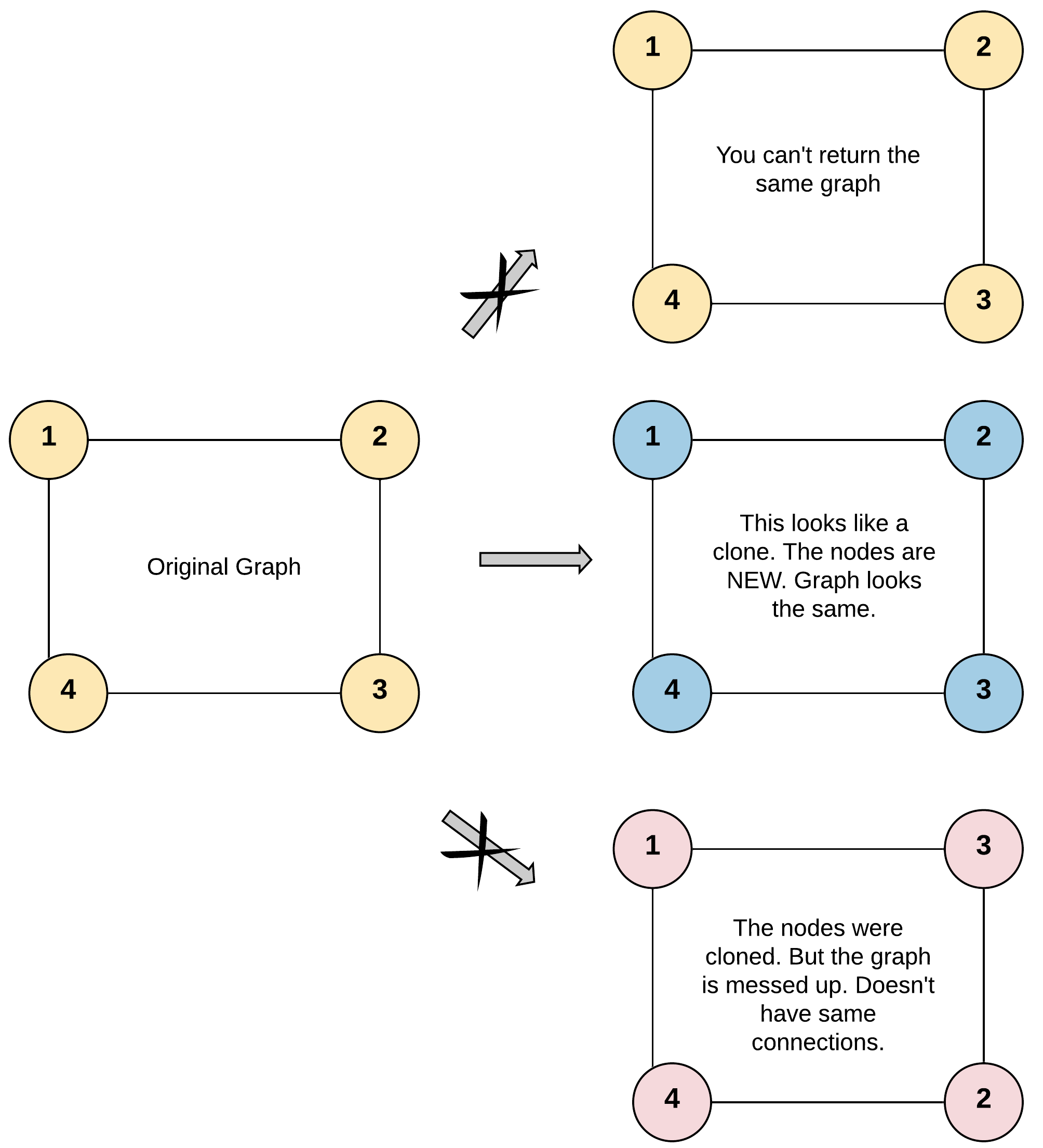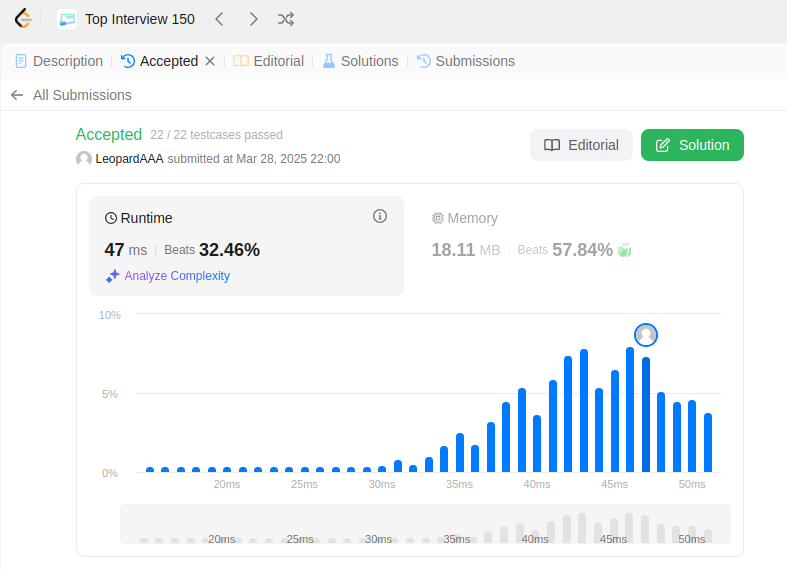Given a reference of a node in a connected undirected graph.
Return a deep copy (clone) of the graph.
Each node in the graph contains a value (int) and a list (List[Node]) of its neighbors.
class Node {
public int val;
public List<Node> neighbors;
}
Test case format:
For simplicity, each node's value is the same as the node's index (1-indexed). For example, the first node with val == 1, the second node with val == 2, and so on. The graph is represented in the test case using an adjacency list.
An adjacency list is a collection of unordered lists used to represent a finite graph. Each list describes the set of neighbors of a node in the graph.
The given node will always be the first node with val = 1. You must return the copy of the given node as a reference to the cloned graph.
Example 1:

Input: adjList = [[2,4],[1,3],[2,4],[1,3]] Output: [[2,4],[1,3],[2,4],[1,3]] Explanation: There are 4 nodes in the graph. 1st node (val = 1)'s neighbors are 2nd node (val = 2) and 4th node (val = 4). 2nd node (val = 2)'s neighbors are 1st node (val = 1) and 3rd node (val = 3). 3rd node (val = 3)'s neighbors are 2nd node (val = 2) and 4th node (val = 4). 4th node (val = 4)'s neighbors are 1st node (val = 1) and 3rd node (val = 3).
Example 2:

Input: adjList = [[]] Output: [[]] Explanation: Note that the input contains one empty list. The graph consists of only one node with val = 1 and it does not have any neighbors.
Example 3:
Input: adjList = [] Output: [] Explanation: This an empty graph, it does not have any nodes.
Constraints:
- The number of nodes in the graph is in the range
[0, 100]. 1 <= Node.val <= 100Node.valis unique for each node.- There are no repeated edges and no self-loops in the graph.
- The Graph is connected and all nodes can be visited starting from the given node.
ChatGPT's Solution:
""" # Definition for a Node. class Node: def __init__(self, val = 0, neighbors = None): self.val = val self.neighbors = neighbors if neighbors is not None else [] """ from typing import Optional class Solution: def cloneGraph(self, node: Optional['Node']) -> Optional['Node']: if not node: return None # Dictionary to store the cloned nodes visited = {} # Depth First Search (DFS) function to clone the graph def dfs(node): # If node is already visited, return its clone if node in visited: return visited[node] # Create a clone of the current node clone = Node(node.val) visited[node] = clone # Recursively clone the neighbors for neighbor in node.neighbors: clone.neighbors.append(dfs(neighbor)) return clone return dfs(node)





 浙公网安备 33010602011771号
浙公网安备 33010602011771号